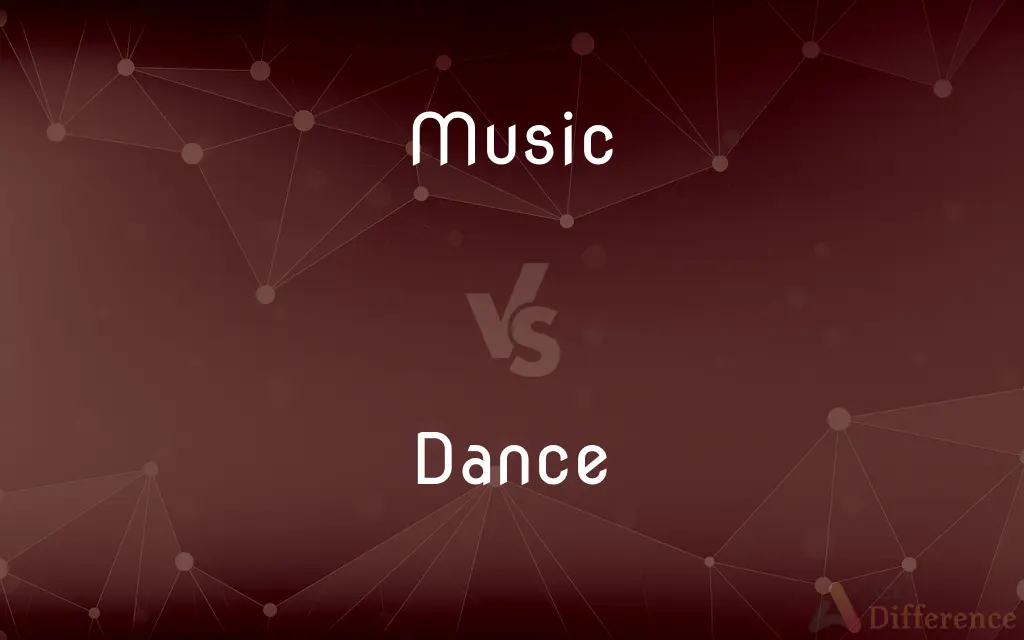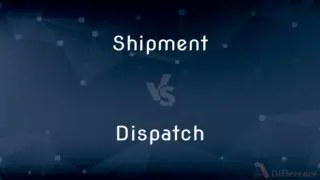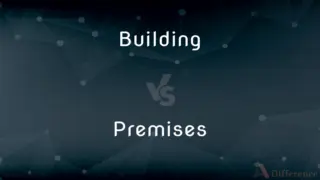Music vs. Dance — What's the Difference?
By Tayyaba Rehman & Urooj Arif — Updated on March 26, 2024
Music involves creating sound with rhythm, melody, and harmony, focusing on auditory experiences; dance is the art of movement to express ideas or feelings, often accompanied by music, emphasizing physical expression.

Difference Between Music and Dance
Table of Contents
ADVERTISEMENT
Key Differences
Music is an auditory art form that relies on sound elements like rhythm, melody, and harmony to create emotional and expressive pieces. It can exist independently of visual performance, engaging the listener's imagination and emotions directly through sound. On the other hand, dance is a physical expression of emotion, ideas, or stories through structured or improvised movement. It often requires music as a backdrop for its performances, but its primary mode of communication is through the dancers' bodies, making use of space, time, and energy.
While music composition involves arranging notes, chords, and rhythms to create a cohesive piece that can be performed by musicians or produced electronically, dance choreography organizes human movement patterns in space and time, often in response to music. This choreography can be interpreted by dancers, whose physical interpretations bring the piece to life visually.
The appreciation of music is primarily through listening and emotional response, allowing for a deeply personal and introspective experience. Conversely, dance is appreciated through observation of movement and the physicality of the performers, providing a visual and kinesthetic experience that can be shared directly with an audience.
Music can be recorded and enjoyed in its exact form repeatedly, preserving the composer's original intent and the performers' interpretation. Dance, while it can be recorded, is often considered a live art form where each performance is unique, influenced by the dancers' interpretation and interaction with the audience.
Instruments play a central role in producing music, ranging from traditional acoustic instruments to modern electronic devices. In dance, the human body itself is the instrument, and dancers train for years to master control over their movements to expressively convey emotions and narratives.
ADVERTISEMENT
Comparison Chart
Primary Medium
Sound
Movement
Expression Form
Auditory
Physical and Visual
Key Elements
Rhythm, Melody, Harmony
Body Movement, Space, Time, Energy
Performance
Can be live or recorded
Primarily live, with unique interpretations
Instruments
Various musical instruments
Human body
Compare with Definitions
Music
An academic discipline studying sound organization and cultural impact.
Music theory explores the structure and composition of music across different genres.
Dance
A form of non-verbal communication and expression of feelings.
Contemporary dance often expresses complex emotions through abstract movements.
Music
An art form of organizing sounds with rhythm, melody, and harmony.
Classical music often features complex compositions played by orchestras.
Dance
A competitive sport and recreational activity.
Ballroom dance competitions showcase precision, style, and partnership.
Music
A medium for emotional and cultural expression through sound.
Jazz music emerged as a significant cultural expression within the African American communities.
Dance
A physical discipline that combines creativity with physical strength and flexibility.
Breakdancing requires not only rhythm but also significant physical strength and agility.
Music
A therapeutic tool for emotional and cognitive well-being.
Music therapy uses musical interaction as a form of psychological care.
Dance
The art of moving the body in a rhythmical way, usually to music.
Ballet is a highly disciplined form of dance that tells a story through graceful movements.
Music
A form of entertainment that can be performed live or recorded.
Live concerts provide an immersive music listening experience.
Dance
A cultural tradition and social activity in many societies.
Folk dances are performed at cultural events to celebrate heritage and traditions.
Music
Music is the art of arranging sounds in time to produce a composition through the elements of melody, harmony, rhythm, and timbre. It is one of the universal cultural aspects of all human societies.
Dance
Dance is a performing art form consisting of sequences of movement, either improvised or purposefully selected. This movement has aesthetic and often symbolic value.
Music
The art of arranging sounds in time so as to produce a continuous, unified, and evocative composition, as through melody, harmony, rhythm, and timbre.
Dance
The music composed or played for a certain kind of dance or for a particular dance.
Music
Vocal or instrumental sounds possessing a degree of melody, harmony, or rhythm.
Dance
To move rhythmically usually to music, using prescribed or improvised steps and gestures.
Music
A musical composition.
Dance
(Zoology) To perform a specialized set of movements to communicate chiefly with other members of the same species.
Music
The written or printed score for such a composition.
Dance
To move or leap about excitedly.
Music
Such scores considered as a group
We keep our music in a stack near the piano.
Dance
To bob up and down or move about rapidly
The leaves danced in the wind.
Music
A musical accompaniment.
Dance
To appear to flash or twinkle
Eyes that danced with merriment.
Music
A particular category or kind of music.
Dance
(Informal) To speak or behave in an evasive or vacillating manner
Danced around the issue.
Music
An aesthetically pleasing or harmonious sound or combination of sounds
The music of the wind in the pines.
Dance
To engage in or perform (a dance).
Music
A series of sounds organized in time, usually employing some combination of melody, harmony, tempo, rhythm etc. usually to convey a mood.
I keep listening to this music because it's a masterpiece.
Dance
To lead (someone) in a dance.
Music
(figuratively) Any pleasing or interesting sounds.
Dance
To cause to move up and down quickly or lightly
Danced the child on her knee.
Music
An art form, created by organizing of pitch, rhythm, and sounds made using musical instruments and sometimes singing.
Dance
A series of motions and steps, such as the waltz or tango, usually performed to music.
Music
A guide to playing or singing a particular tune; sheet music.
Dance
The act or an instance of dancing
May I have this dance?.
Music
Electronic signal jamming.
Dance
The art of dancing
Studied dance in college.
Music
Heated argument.
Dance
A party or gathering of people for dancing.
Music
Fun; amusement.
Dance
(Zoology) An act of communication by dancing
A peacock's courtship dance.
Music
(transitive) To seduce or entice with music.
Dance
A sequence of rhythmic steps or movements usually performed to music, for pleasure or as a form of social interaction.
Music
The science and the art of tones, or musical sounds, i. e., sounds of higher or lower pitch, begotten of uniform and synchronous vibrations, as of a string at various degrees of tension; the science of harmonical tones which treats of the principles of harmony, or the properties, dependences, and relations of tones to each other; the art of combining tones in a manner to please the ear.
Dance
A social gathering where dancing is the main activity.
Music
Melody; a rhythmical and otherwise agreeable succession of tones.
Dance
(uncountable) The art, profession, and study of dancing.
Music
The written and printed notation of a musical composition; the score.
Dance
(uncountable) A genre of modern music characterised by sampled beats, repetitive rhythms and few lyrics.
Music
Love of music; capacity of enjoying music.
The man that hath no music in himselfNor is not moved with concord of sweet sounds,Is fit for treasons, stratagems, and spoils.
Dance
A piece of music with a particular dance rhythm.
Music
A more or less musical sound made by many of the lower animals. See Stridulation.
Dance
(figurative) A battle of wits, especially one commonly fought between two rivals.
So how much longer are we gonna do this dance?
Music
An artistic form of auditory communication incorporating instrumental or vocal tones in a structured and continuous manner
Dance
Any strenuous or difficult movement, action, or task.
Music
Any agreeable (pleasing and harmonious) sounds;
He fell asleep to the music of the wind chimes
Dance
(heraldry) A normally horizontal stripe called a fess that has been modified to zig-zag across the center of a coat of arms from dexter to sinister.
Music
Musical activity (singing or whistling etc.);
His music was his central interest
Dance
(apiology) A repetitive movement used in communication between worker honey bees.
Music
(music) the sounds produced by singers or musical instruments (or reproductions of such sounds)
Dance
The death throes of a hanged person.
Music
Punishment for one's actions;
You have to face the music
Take your medicine
Dance
(intransitive) To move with rhythmic steps or movements, especially in time to music.
I danced with her all night long.
These drum beats are making me dance!
Dance
(intransitive) To leap or move lightly and rapidly.
His eyes danced with pleasure as he spoke.
She accused her political opponent of dancing around the issue instead of confronting it.
Dance
(transitive) To perform the steps to.
Have you ever danced the tango?
Dance
(transitive) To cause to dance, or move nimbly or merrily about.
Dance
To make a repetitive movement in order to communicate to other worker honey bees.
Dance
To kick and convulse from the effects of being hanged.
Dance
To move with measured steps, or to a musical accompaniment; to go through, either alone or in company with others, with a regulated succession of movements, (commonly) to the sound of music; to trip or leap rhythmically.
Jack shall pipe and Gill shall dance.
Good shepherd, what fair swain is thisWhich dances with your daughter?
Dance
To move nimbly or merrily; to express pleasure by motion; to caper; to frisk; to skip about.
Then, 'tis time to dance off.
More dances my rapt heartThan when I first my wedded mistress saw.
Shadows in the glassy waters dance.
Where rivulets dance their wayward round.
Dance
To cause to dance, or move nimbly or merrily about, or up and down; to dandle.
To dance our ringlets to the whistling wind.
Thy grandsire loved thee well;Many a time he danced thee on his knee.
A man of his place, and so near our favor,To dance attendance on their lordships' pleasure.
Dance
The leaping, tripping, or measured stepping of one who dances; an amusement, in which the movements of the persons are regulated by art, in figures and in accord with music.
Dance
A tune by which dancing is regulated, as the minuet, the waltz, the cotillon, etc.
Of remedies of love she knew parchanceFor of that art she couth the olde dance.
Dance
An artistic form of nonverbal communication
Dance
A party of people assembled for dancing
Dance
Taking a series of rhythmical steps (and movements) in time to music
Dance
A party for social dancing
Dance
Move in a graceful and rhythmical way;
The young girl danced into the room
Dance
Move in a pattern; usually to musical accompaniment; do or perform a dance;
My husband and I like to dance at home to the radio
Dance
Skip, leap, or move up and down or sideways;
Dancing flames
The children danced with joy
Common Curiosities
Can dance exist without music?
Yes, dance can be performed in silence or to ambient sounds, focusing on movement itself as the primary form of expression.
How do musicians and dancers collaborate?
Musicians provide the auditory backdrop for dancers, who interpret the music through movement, creating a synchronized performance.
Are there forms of dance that do not require music?
Yes, some modern and contemporary dance pieces are choreographed to silence or non-musical sounds, emphasizing the movement itself.
What is the significance of live performances in music and dance?
Live performances create a direct, energetic connection between the artists and the audience, enhancing the experience.
Can music and dance be improvised?
Both art forms can be improvised, allowing artists to express themselves spontaneously through sound and movement.
What is the role of a conductor in music?
A conductor directs the performance of musicians, ensuring cohesion and interpreting the musical score for the ensemble.
What is the main difference between music and dance?
Music is an auditory art form focusing on sound, while dance is a physical and visual art form focusing on movement.
What roles do rhythm and tempo play in music and dance?
Rhythm and tempo are foundational elements in both, determining the pace and flow of music and dance.
How do music and dance benefit individuals?
Both art forms offer emotional, cognitive, and physical benefits, including stress relief, improved mood, and increased physical fitness.
How is music appreciated differently from dance?
Music is appreciated through listening, whereas dance is appreciated through watching the expressive movements of dancers.
How do cultural differences influence music and dance?
Cultural backgrounds shape the styles, themes, and expressions found in music and dance, reflecting diverse traditions and histories.
What is choreography in dance?
Choreography is the art of designing dance movements and sequences, often in response to music.
How do instruments contribute to music?
Instruments produce the sounds that form the basis of music, ranging from simple percussion to complex electronic systems.
How do dance and music interact in theatrical performances?
In theatrical performances, dance and music work together to enhance the storytelling, mood, and visual appeal of the production.
Can the same music inspire different dance interpretations?
Yes, the same piece of music can lead to varied dance interpretations, reflecting the creativity and perspective of different choreographers and dancers.
Share Your Discovery

Previous Comparison
Shipment vs. Dispatch
Next Comparison
Building vs. PremisesAuthor Spotlight
Written by
Tayyaba RehmanTayyaba Rehman is a distinguished writer, currently serving as a primary contributor to askdifference.com. As a researcher in semantics and etymology, Tayyaba's passion for the complexity of languages and their distinctions has found a perfect home on the platform. Tayyaba delves into the intricacies of language, distinguishing between commonly confused words and phrases, thereby providing clarity for readers worldwide.
Co-written by
Urooj ArifUrooj is a skilled content writer at Ask Difference, known for her exceptional ability to simplify complex topics into engaging and informative content. With a passion for research and a flair for clear, concise writing, she consistently delivers articles that resonate with our diverse audience.















































